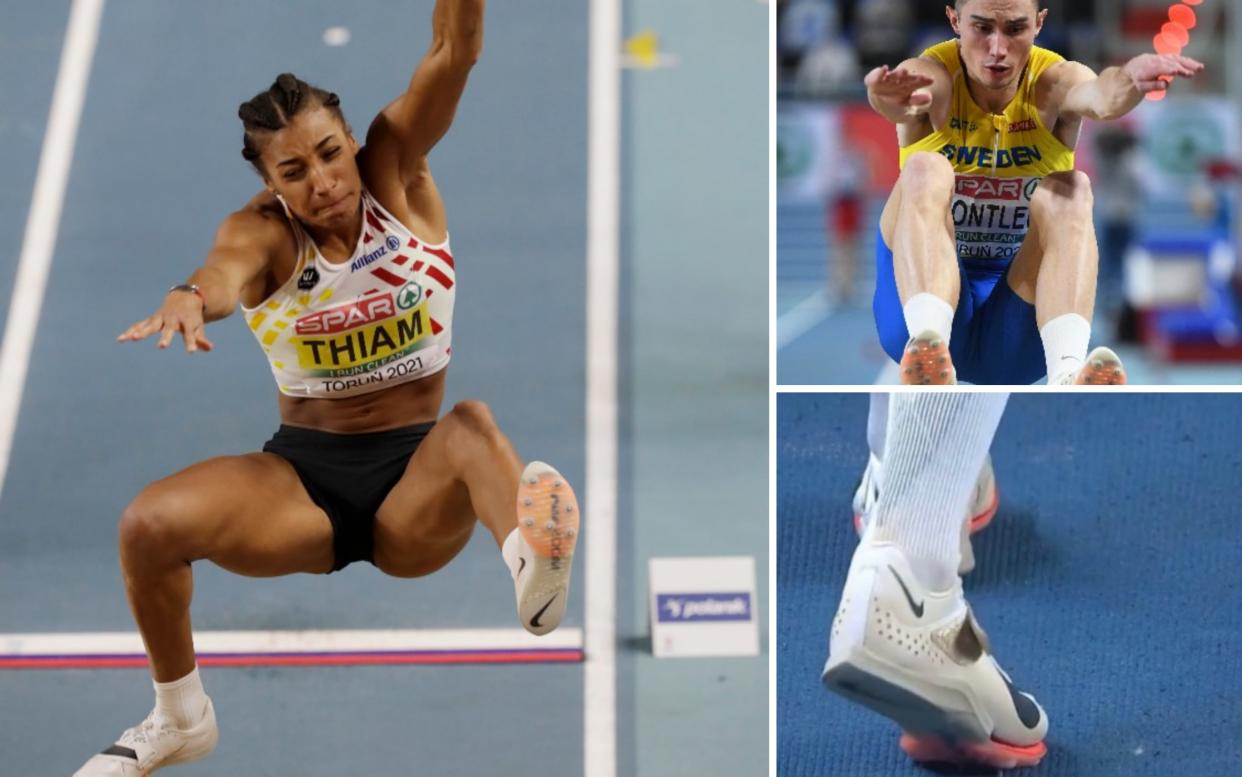Nike 'super shoe' controversy grows after two athletes set personal bests with new long jump prototype

Controversy around Nike’s ‘super shoe’ technology looks set to grow after a new long jump prototype helped two athletes set personal bests at the European Indoor Championships this weekend.
After years of falling marathon and half-marathon times since Nike released its revolutionary Vaporfly 4% shoe, attention has recently turned to the track with a number of middle- and long-distance athletes smashing records in new Nike spikes. One shoe company executive told Telegraph Sport the next couple of years will “be mayhem” with records falling regularly in those disciplines.
Now, for the first time, Nike’s shoe technology looks to have been harnessed for long jumpers, with Sweden's Thobias Montler and Belgium’s Nafi Thiam both wearing eye-catching spikes featuring what appears to be a separate orange forefoot plate while competing at the European Indoor Championships in Torun, Poland.

While the sample size is very small for now, Montler added nine centimetres to his personal best in the final, setting a new Swedish record 8.31 metres to claim silver. Thiam also set a personal best for an indoor pentathlon of 6.60m - the best she has ever managed in an indoor multi-event but down on distances she has managed in standalone long jump competitions.
That jump helped Olympic heptathlon champion Thiam reclaim the European indoor pentathlon title last won by her big rival Katarina Johnson-Thompson in 2019. Johnson-Thompson, who is currently absent injured, beat Thiam to the world heptathlon title later that year and the two are the leading gold medal candidates for the Tokyo Games.
In December, World Athletics reversed its decision to ban prototypes in elite competition when it announced prototypes could be worn for a 12-month ‘development’ period as long as they had been submitted for approval to the governing body and passed as legal. They can then be worn at all international competitions except for the Olympics and World Championships. The rules for those specific events state shoes must be ‘openly available to all’.
A Nike shoe called the LJ [Long Jump] Elite was added to World Athletics’ list of approved shoes on February 13 and can now be used for the next year.
Although it is not yet known if this prototype contains the same carbon-fibre and hyper-responsive foam technology as Nike’s middle- and long-distance spikes, the development of a new long jump prototype will be of some concern to those who argue shoe developments are threatening the integrity of the sport as its spread extends into new disciplines.
Nike’s efforts to create similar spikes for sprint events have so far proved unsuccessful with its innovative Viperfly prototype unveiled last year never released because it did not adhere to World Athletics regulations. It is believed the company is working on a new version, which may appear in competition this year.
New Balance have so far had the biggest impact on shorter distances with its Fuelcell SDx spikes helping Holland’s Femke Bol run the six fastest 400m times in Europe this year, including her personal best 50.63-second run when winning the European Indoor title on Saturday night. New Balance also hopes to unveil new spikes for shorter sprint events in time for the Tokyo Games.

